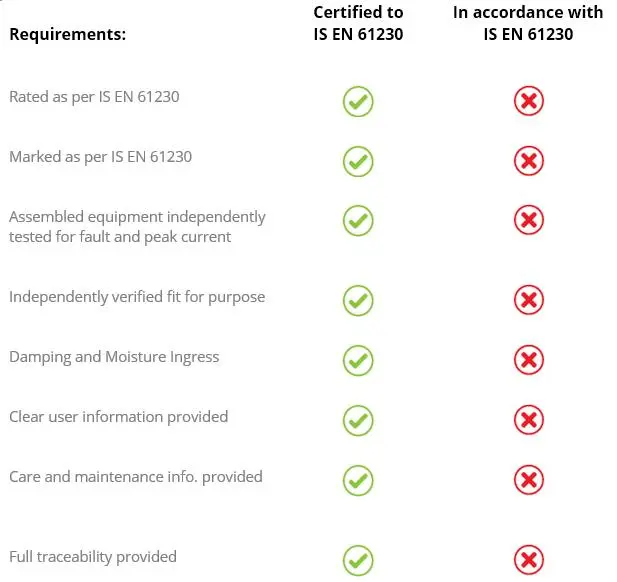IS EN 61230 : 2008. Portable equipment for earthing and short-circuiting.
This Standard was first introduced in 1996 and amended in 2008, its purpose is to ensure that protective safety equipment does protect workers, is fit for purpose and suitable for use. The following may be helpful.
225 Amps* per sq mm in copper material will raise temp. to 450ᵒC in 1 sec.
190 Amps* per sq mm in copper material will raise temp. to 300ᵒC in 1 sec.
125Amps* per sq mm in aluminium material will raise temp. to 300ᵒ in 1sec.
Based on the above, 50sqmm copper should be rated as follows;
225Amps x 50 = 11,250 Amps for 450ᵒC rise in temperature.
Current Density: Current²/Cross sectional area².
Heat Generated in 1 sec: Current density x t.
Therefore 11,250²/50² x1 = 50,625 (A/mm²)².s = 450ᵒC on the metal temperature chart. Similarly, if the conductor is rated 20.54kA/0.3 sec. the calculation is the same: 20,540²/50² x 0.3 = 50,626 (A/mm²)².s
Based on the above calculations, the current density required to raise copper to 300ᵒC is 36,100 (A/mm²)².s, to raise copper to 450ᵒC is 50,625 (A/mm²)².s and to raise Aluminium to 300ᵒC is 16,625(A/mm²)².s
Any time/current combination that produces this product or less is compliant with IS EN 61230.
The same formula applies to rate all conductors, all sizes, copper or aluminium.
Tests carried by Tynagh Networks indicate that conductors rated to exceed 450ᵒC will not survive the mechanical stresses of that fault current.
For example, 95sqmm conductor rated for 25kA instead 21.3kA will reach 700ᵒC in 1 second instead of 450ᵒC and will fail due to mechanical stress, rather than thermal stress.
*IEC 60865-1, IEC 60909-0, IS EN 61230: 2008

